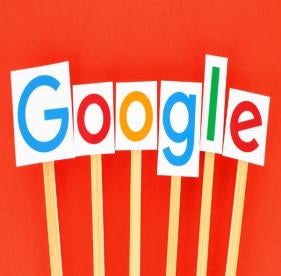Takeaway: To support a conclusion of nonobviousness, an alleged long-felt need must have been a persistent one that was recognized by those of ordinary skill in the art, must not have been satisfied by another before the challenged patent, and must have been satisfied by the claimed invention.
In its Final Written Decision, the Board concluded that all of the challenged claims of the ‘096 patent were unpatentable under 35 U.S.C. § 103(a). Moreover, the Board dismissed Patent Owner’s Motion to Exclude Evidence and granted-in-part/denied-in-part Petitioner’s Motion to Exclude Evidence.
Petitioner had challenged claims 16, 17, 19, and 20 of the ‘096 patent. As characterized by the Board, the ‘096 patent relates to the provision of a directory website “[including] numerous links to a variety of goods and services suppliers related to a particular topic while providing easy and quick navigation to and from any number of supplier Web sites so that the user can find out more detailed information than that which is provided by the directory.”
The Board had previously interpreted the claim terms “keyword results displaying web page” and “in the same rollover viewing area” in its Decision on Institution. The Board maintained its previous interpretations that “keyword results displaying web page” means “a web page that displays search results—gathered information relating to one or more search term(s) (key words) input by a user to a search engine” and that “in the same rollover viewing area” does not require a rigidly fixed rollover area but instead contemplates “the possibility of multiple rollover windows.”
Patent Owner had moved, under Federal Rules of Evidence 402 and 403, to exclude “a source code appendix to Finseth and all testimony [including testimony by Petitioner’s expert, Benjamin B. Bederson, Ph.D.] and argument . . . based on the source code because it is not prior art.” The Board denied Patent Owner’s Motion to Exclude as moot because “Dr. Bederson’s references to the source code are examples that [the Board did] not rely upon in reaching [its] decision.”
Petitioner, for its own part, also moved to exclude a number of exhibits. Among other things, Petitioner had argued that exhibits submitted by Patent Owner as objective evidence of non-obviousness should be excluded because “customer satisfaction is not well-recognized as an objective indicator of nonobviousness.” The Board disagreed, and did not exclude this evidence, instead finding that customer satisfaction “evidence is relevant if tied to the challenged claims.” On the other hand, the Board did agree with Petitioner that certain articles including statements from one of Petitioner’s employees were hearsay and, as such, excluded the exhibits corresponding to these articles.
As for the obviousness challenged based on the proposed combination of Hill and Finseth, began by noting that “[t]here is no dispute that each limitation of the challenged claims is found in one or the other of Hill and Finseth.” Thus, during the instant proceeding, the parties had focused on the issues of “motivation to combine, whether Finseth teaches away from combining, and whether or not there is objective evidence of nonobviousness.”
The Board disagreed with Patent Owner’s position that there was no motion to combine, finding that Patent Owner’s assertions “[did] not consider Finseth’s teachings as a whole.” The Board disagreed with Patent Owner’s position that Finseth teaches away from combining, in that it was “not persuaded that Finseth disparages the use of descriptive portions sufficiently for us to conclude that Finseth teaches away from the claimed invention.” The Board disagreed with Patent Owner’s assertion that there was objective evidence of non-obviousness in the form of long-felt need, finding that the testimony of Patent Owner’s expert did not establish a long-felt but unmet need and that Patent Owner had not “[explained] sufficiently why there was a long-felt need to solve a particular problem that others recognized prior to the ’096 patent but were unable to meet.”
Google, Inc. v. Michael Meiresonne, IPR2014-01188
Paper 38: Final Written Decision
Dated: January 20, 2016
Patent: 8,156,096 B2
Before: Justin T. Arbes, Glenn J. Perry, and Tina E. Hulse
Written by: Perry
Related Proceedings: Industrial Quick Search, Inc. v. Google, Inc., Case No. 1:13-cv-00770-JTN, filed on July 17, 2013 in the Western District of Michigan



 i
i

